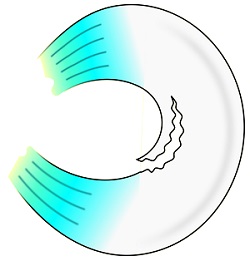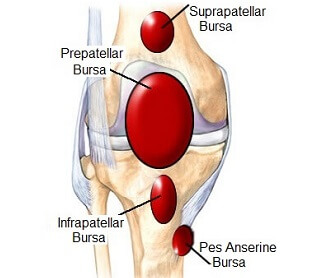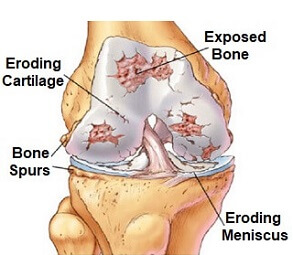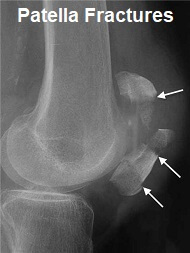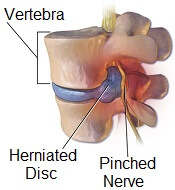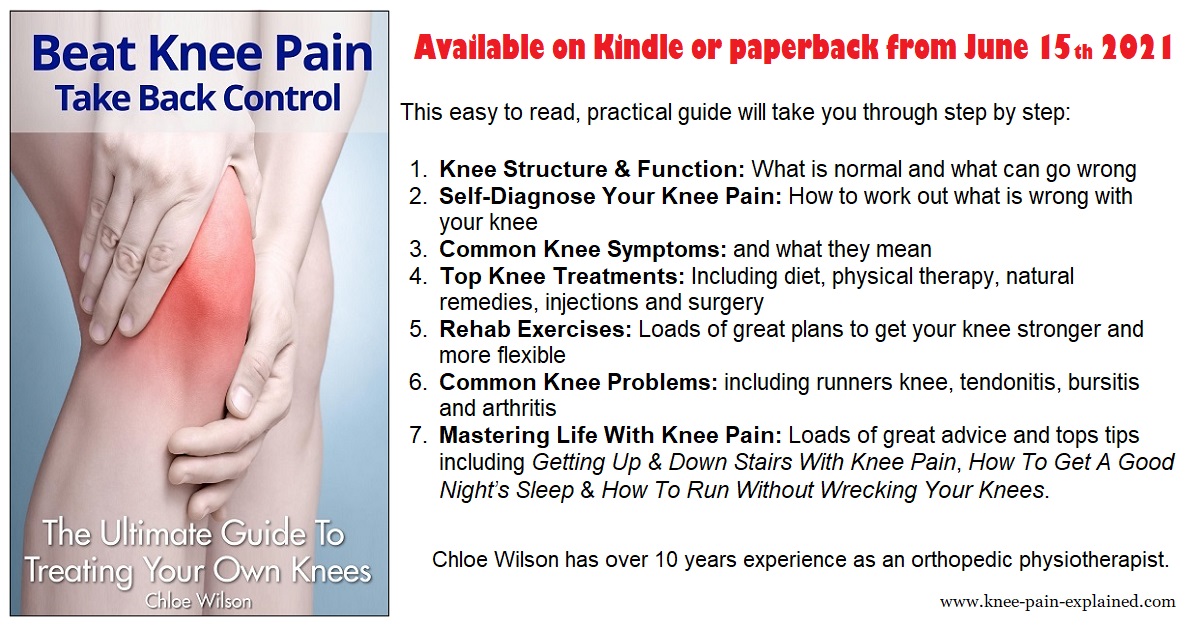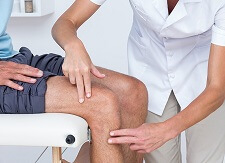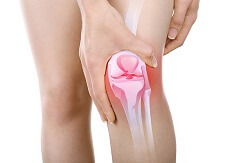- Home
- Knee Pain Diagnosis
- Sharp Knee Pain
Sharp Knee Pain
Written By: Chloe Wilson, BSc(Hons) Physiotherapy
Reviewed by: KPE Medical Review Board
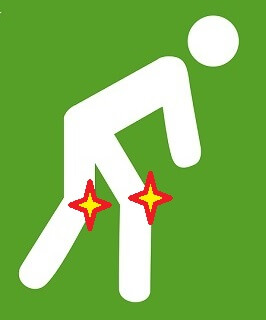
Sharp knee pain can be extremely unpleasant, often stopping people in their tracks. It usually indicates a problem in one of the knee bones, or the surrounding neural structures. Sharp pain can also occur when there is damage to the soft tissues in and around the knee.
Sharp knee pain is often fairly short lived, coming on suddenly with a particular movement and then easing quickly when you stop the aggravating activity.
In some cases the sharp stabbing pain in and around the knee will persist, but often it either settles completely, or eases leaving behind a residual, ongoing ache or throbbing type pain.
When the sharp pain is confined to the knee joint, it usually indicates a problem in the knee joint itself such as a soft tissue injury or inflammation of the joint. If it accompanied by a shooting pain that travels down the leg, that usually indicates a neural problem either at the knee itself, or in the lower back.
What Causes Sharp Knee Pain?
The most common causes of sharp knee pain are:
- Torn Knee Cartilage: the special cushioning the lines the knee joint
- Knee Bursitis: inflammation of anti-friction sac
- Knee Arthritis: wear and tear
- Loose Body: bone fragment floating in the joint
- Fracture: broken bone
- Nerve Irritation: nerve gets squashed or irritated
Here we will look at the common causes of sharp knee pain, how they present and how to work out what is going on in your knee. We then look more in-depth at how to treat these different causes of sharp stabbing pain in the knee.
1. Soft Tissue Injuries
Injuries to the soft tissues in the knee are the most common cause of sharp knee pain. Most typically the sharp stabbing knee pain develops when there is damage to the cartilage lining the knee joint or inflammation in the knee bursa.
Knee Cartilage Tear
Sharp pain in the knee is most commonly caused by something getting stuck in the knee joint.
The surface of each knee bone is covered in a thick layer of cartilage which allows smooth, pain-free movement by working as a spacer between the joints so that as the knee moves, there is no friction on the bones. The knee cartilage also works as a shock absorber to reduce the forces going through the knee with activities such as running and jumping.
If this knee cartilage gets damaged, then small fragments can tear off and get stuck in the joint.
There are two ways this can happen:
- Cartilage Fragment: A small piece of cartilage may have torn off completely from the main bulk of the meniscus and be floating around in the knee joint
- Bucket Handle Tear: This is where a partial tear in the cartilage leaves a loose flap that is only partially attached to the meniscus. This flap can move around slightly and occasionally gets stuck in the joint
When a loose portion of cartilage gets stuck in the joint, it typically causes a sharp stabbing pain and often results in locking, where the knee joint gets stuck and you can't move your leg. Usually after a few seconds of wiggling the knee around, the cartilage moves slightly and once the fragment is no longer stuck, the pain subsides and the knee moves freely.
You can find out more about the causes, symptoms, diagnosis and treatment options in the Knee Cartilage Injuries section.
Knee Bursitis
Knee bursitis is another cause of sharp knee pain and can affect any part of the knee.
Around the knee are various fluid filled sacs, known as knee bursa, which sit between soft tissues and bone to reduce friction and pressure on the knee structures.
If the bursa get inflamed and then squashed, it can result in a sharp pain in the knee.
The location of the pain indicates which bursa is affected. If the sharp stabbing pain is at the:
- Front of the Knee: or just below the knee cap, likely prepatellar bursitis, aka housemaid’s knee,
- Behind the Knee: it is likely a Bakers Cyst.
- Inner Side of the Knee: Pes Anserine bursitis typically causes pain on the inner side of the knee
- Outer Side of The Knee: iliotibial bursitis causes pain on the outer side of the knee, typically affecting runners.
You can find out loads more about the different types of bursitis, how they present and how to treat them in the knee bursitis section.
2. Bone Problems
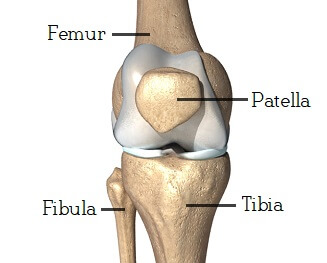
There are also a number of bone problems that can cause sharp knee pain. There are three bones associated with the knee which form two separate joints.
- Tibiofemoral Joint: is what we typically think of as the knee joint and is where the femur and tibia, the thigh and shin bones, meet
- Patellofemoral Joint: the kneecap joint between the femur and patella, the thigh bone and kneecap
Joint Wear & Tear
A sharp pain in the knee may be a sign of wear and tear inside the joint. Damage to the cartilage, either through wear and tear causing it to thin and fray, or through an injury which causes it to tear, can lead to the formation of knee spurs aka osteophytes, small lumps of bone which stick out slightly.
These osteophytes reduce the space between the bones and without the cartilage to protect and cover them, bone rubs against bone. This typically leads to arthritis.
When the knee moves, there is friction and pressure on the osteophytes which results in sharp knee pain. In this instance, the sharp stabbing knee pain comes on quickly when the knee moves into a position that places pressure on the osteophytes, typically with activities where there is weight going through a bent or twisted knee.
Once you move the knee into a different position and relieve the pressure on the osteophytes, the sharp pain goes away, but it may leave a residual aching pain.
Often, walking itself feels ok, but when you add any extra pressure to the knee joint such as squatting, twisting, running or going up and down stairs, that brings on the sharp knee pain.
If the sharp pain gets worse going upstairs typically indicates a problem with the tibiofemoral joint, whereas if your sharp knee pain is worse coming down the stairs it is more likely to be a problem with the kneecap.
You can find out all about the common causes, symptoms, diagnosis and treatment options in the Knee Bone Spurs and Knee Arthritis sections.
Loose Bodies
Sharp knee pain can also occur when something gets stuck in the knee joint as it moves. In most cases, it is a small fragment of bone that gets stuck, typically a osteophyte that has broken off. Alternatively, it could be a small fragment of cartilage that has torn off the meniscus.
One or more of these small fragments, known as loose bodies, may be floating around within the joint capsule. It may at times get trapped in the joint causing sharp knee pain and may even cause the knee to lock. Once it moves out of the way, the pain typically subsides and normal knee movement returns.
Pain from a loose body tends to be intermittent rather than constant. It won’t happen every time you do a certain activity, it will most likely catch you off guard when you are not expecting it. You can find out loads more about how cartilage tears cause sharp pain in the knee and how to treat them in the meniscus tear section.
Knee Fractures
If there is severe sharp knee pain, that is unrelenting and started due to an injury may indicate a break in one of the knee bones.
With a broken bone, there is often considerable swelling and there may be an obvious deformity. Any movement of the bones, however small, is likely to produce a severe, sharp pain in the knee as the broken pieces of bone rub on each other.
It takes a lot of force to break one of the knee bones so you normally know straight away that something is wrong.
The break may be in either the tibia or femur, or if you have fallen onto the front of the knee, there may be a patella fracture.
3. Nerve Problems
Sharp pain in the knee can also be caused by a neural problem - something wrong with one of more of the nerves travelling from the spine down to through the legs.
Our nerves are like electrical cables and run all over our body. The nerves of the leg arise from the bottom part of the spine branching out to the different parts of the thigh, knee, calf and foot. They transmit messages from the brain and spinal cord to the muscles to tell them what to do and carry signals regarding sensation such as pressure, pain and temperature.
If a nerve gets squashed or irritated, we typically experience a sharp stabbing pain. This may be felt locally at the point where it is trapped, or it may also travel further along the path of the nerve, feeling more like a shooting pain. The sharp pain may also be accompanied by pins and needles or numbness or in more serious cases muscle weakness.
Nerve pain can be due to the nerve getting squashed or trapped, for example by an osteophyte, a particularly tight muscle or a disc bulge in the spine. The nerve can also get irritated if it is surrounded by inflammatory chemicals found in swelling.
So sharp knee pain from a neural problem may be caused by:
- Soft Tissue Injury: in the knee which results in swelling with the inflammatory chemicals irritating the nerve e.g. cartilage tear
- Osteophytes in the Knee: trapping the nerve e.g. arthritis
- Osteophytes in the Spine: trapping the nerve in the lower back typically spinal stenosis
- Inflammation in the Spine e.g. disc bulge or herniation in the lower back which both places pressure on the nerve and irritates it
You can find out lots more about nerve pain on our sister site.
Sharp Knee Pain Causes By Activity
- Sharp Knee Pain When Walking: If the knee pain is worse when you first start walking and then eases, it is likely due to arthritis. If your sharp knee pain gets worse the more you walk, it is likely neural. If it is easier walking uphill or when bent slightly forwards and worse when walking downhill or when upright, it is likely spinal stenosis
- Sharp Knee Pain When Bending: If your knee pain gets worse when bending your knee, it is likely a problem in the knee joint such as arthritis or a cartilage tear. If it is worse when bending your back e.g. reaching down to put your shoes on, it is likely due to a problem in your lower back
- Sharp Knee Pain When Standing: If the knee pain gets worse when standing still but eases with movement, it is likely from arthritis. If your sharp knee pain gets worse with activity it is likely a mechanical problem in the knee such as a cartilage tear or referred pain from the lower back
- Sharp Knee Pain Twisting: This usually indicates that something is getting stuck in the joint, either a loose body or a flap of torn cartilage. It may also indicate instability in the knee due to a ligament sprain or tear
- Sharp Knee Pain When Kicking: This usually indicates an issue with the stability of the knee, typically an ACL injury
- Sharp Stabbing Pain In Knee When Kneeling: A sharp needle like pain in knee when kneeling usually indicates that something is being squashed, typically an inflamed bursa, known as knee bursitis. There is often obvious swelling with bursitis resembling a squashy orange
- Sharp Knee Pain When Climbing Stairs: Sharp knee pain going upstairs typically indicates a problem with the knee joint (tibiofemoral joint) whereas if the pain is worse coming down stairs, the problem is most likely in the kneecap. Find out more in the knee pain on stairs section
- Sharp Knee Pain When Running: This is fairly rare and usually indicates that something is getting squashed in the joint. Knee pain when running tends to be more of an aching, throbbing type pain rather than a sharp pain. Visit the knee pain from running section to find out more
- Sharp Pain On the Inside of the Leg: Sharp knee pain on the inner side of the leg is usually caused by damage to the medial collateral ligament or the medial meniscus. Knee pain may be felt at the time of injury, usually from twisting awkwardly and is then followed by an ongoing ache while the knee injury heals
- Sharp Knee Pain When Sitting Down: Pain that gets worse with prolonged inactivity, such as sitting for more than 20-30 minutes is a common feature of arthritis. If your sharp knee pain eases after a few minutes of movement, arthritis is indeed the most likely cause.
- Severe Sharp Knee Pain: with unrelenting pain usually indicates a fracture of one of the knee bones or something more sinister going on - worth seeing your doctor
- Sharp Shooting Pain In Knee At Rest: If sharp knee pain is worse at rest and you get sudden, sharp, shooting pain for no obvious reason, it is most likely to either be due to nerve irritation but could also be from knee arthritis or a fracture.
- Stabbing Pain In Knee: If it feels like there is a sharp knife stabbing into your knee, or a burning sensation, then most likely there is either some nerve irritation or something is getting stuck in the joint such as an osteophyte.
Sharp Knee Pain Summary
Sharp knee pain can be caused by a number of different conditions, including arthritis, bursitis, tendinitis, bone spurs or ligament tears. It can also be triggered by overuse or a direct impact to the knee joint.
To diagnose sharp knee pain, your doctor will likely ask about your medical history and perform a physical exam to determine the cause of your pain. They may also order imaging tests, such as an X-ray, MRI, or CT scan, to get a better look at the joint and detect any structural abnormalities.
Sharp knee pain can be treated in a variety of ways, depending on the underlying cause. Treatments may include rest, physical therapy, exercises, anti-inflammatory medications, corticosteroid injections, and in some cases surgery.
You might also be interested in the following articles:
- Knee Pain & Popping
- Swollen Knee Treatment
- Front Knee Pain
- Side Knee Pain
- Burning Knee Pain
- Knee Range Of Motion
- Knee Pain On Stairs
Check Out Our New Book!
We are really excited to announce the launch of our latest book, Beat Knee Pain: Take Back Control. Everything you need to know to help you work out what is wrong with your knee and how to get back to doing what you love.
Page Last Updated: 16/03/23
Next Review Due: 16/03/25
